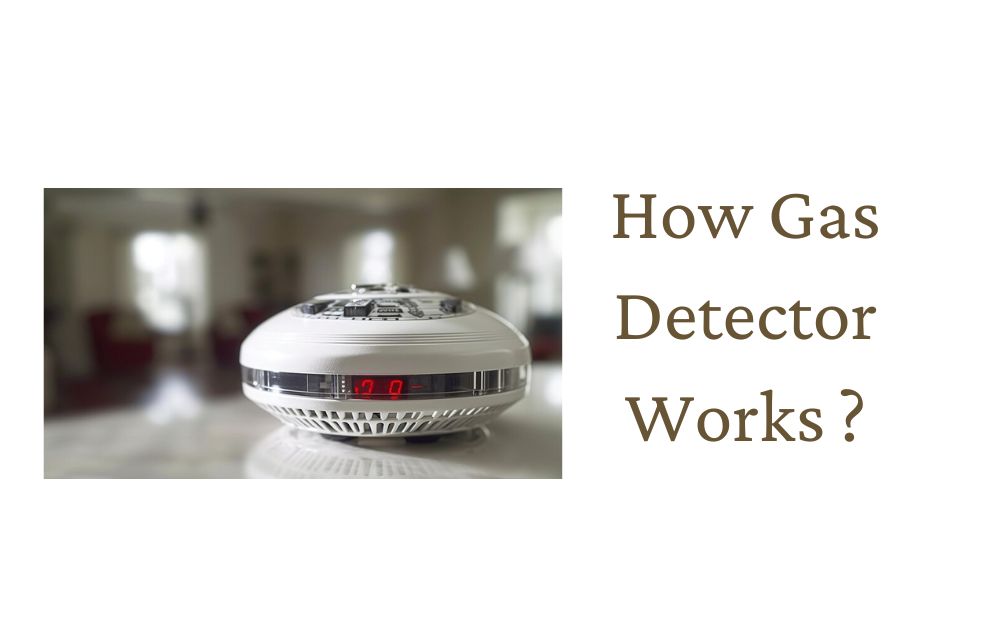
Gas detectors are indispensable tools for ensuring safety in various environments, from industrial facilities to residential homes. But have you ever wondered how these devices actually work? In this guide, we’ll break down the workings of Gas Detector in easy-to-understand terms, so you can gain a clear understanding of their mechanisms and importance.
Table of Contents
ToggleThe Components of a Gas Detector
Gas detectors typically consist of several key components, each playing a crucial role in the detection process:
1. Sensors
Sensors are the heart of a gas detector, responsible for detecting gas molecules and converting this information into measurable signals. There are various types of sensors used in gas detectors, including:
- Electrochemical Sensors: These sensors use chemical reactions to generate electrical currents proportional to the concentration of a specific gas. They are commonly used for detecting toxic gases such as carbon monoxide and hydrogen sulfide.
- Catalytic Bead Sensors: Catalytic bead sensors rely on the catalytic combustion of gases to produce heat, which changes the resistance of a sensing element. They are effective for detecting flammable gases such as methane and propane.
- Infrared Sensors: Infrared sensors measure the absorption of infrared radiation by gas molecules, allowing for the detection of gases such as carbon dioxide and methane.
2. Signal Processing Circuitry
Signal processing circuitry processes the signals generated by the sensors, amplifying and analyzing them to determine gas concentrations. This circuitry may include microprocessors, amplifiers, and signal filters to enhance the accuracy and reliability of the detection process.
3. Display and Alarms
Gas detectors are equipped with displays to provide users with real-time feedback on gas concentrations and alarm status. They may feature digital or analog displays, along with audible and visual alarms to alert users to hazardous conditions. Alarms are triggered when gas concentrations exceed preset thresholds, prompting immediate action to mitigate risks.
4. Power Source
Gas detectors require power to operate, typically supplied by batteries or external power sources. Battery-powered detectors offer portability and flexibility, making them suitable for fieldwork and temporary installations. Some detectors may also feature rechargeable batteries or solar panels for extended use.
How Gas Detection Works in Practice
When a gas detector is activated, its sensors begin monitoring the surrounding air for the presence of target gases. As gas molecules interact with the sensors, they cause measurable changes in electrical conductivity, resistance, or infrared absorption, depending on the sensor type.
The signal processing circuitry analyzes the sensor signals, comparing them to predefined gas concentration thresholds. If gas concentrations exceed these thresholds, the detector triggers alarms to warn users of potential hazards. Depending on the severity of the situation, users can take appropriate actions, such as evacuating the area, ventilating the space, or donning personal protective equipment.
Benefits of Gas Detectors

Gas detectors offer numerous benefits for both individuals and organizations:
- Early Warning: Gas detectors provide early warning of gas hazards, allowing users to take proactive measures to mitigate risks and prevent accidents.
- Safety: By continuously monitoring gas concentrations, detectors help maintain safe working environments and protect human health.
- Compliance: Gas detectors help organizations comply with safety regulations and standards, reducing the risk of fines, litigation, and reputational damage.
- Peace of Mind: Knowing that gas detectors are in place provides peace of mind for workers, residents, and facility managers, fostering a culture of safety and responsibility.
Conclusion
Gas detectors play a crucial role in safeguarding lives and property by detecting hazardous gases and alerting users to potential dangers. By understanding how gas detectors work and the importance of their components, individuals and organizations can make informed decisions to ensure safety in various environments. Invest in reliable gas detection solutions, prioritize safety training and awareness, and empower users with the tools they need to respond effectively to gas emergencies.
Note:- To read more articles visit on aphelonline.
